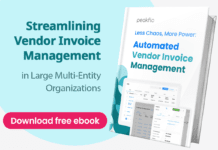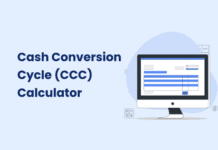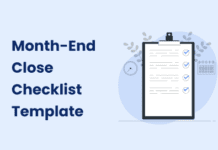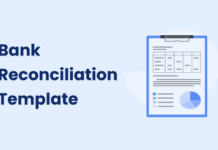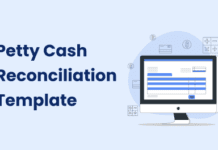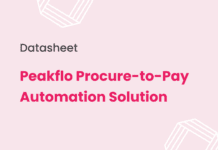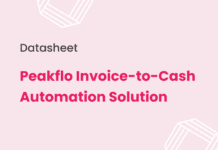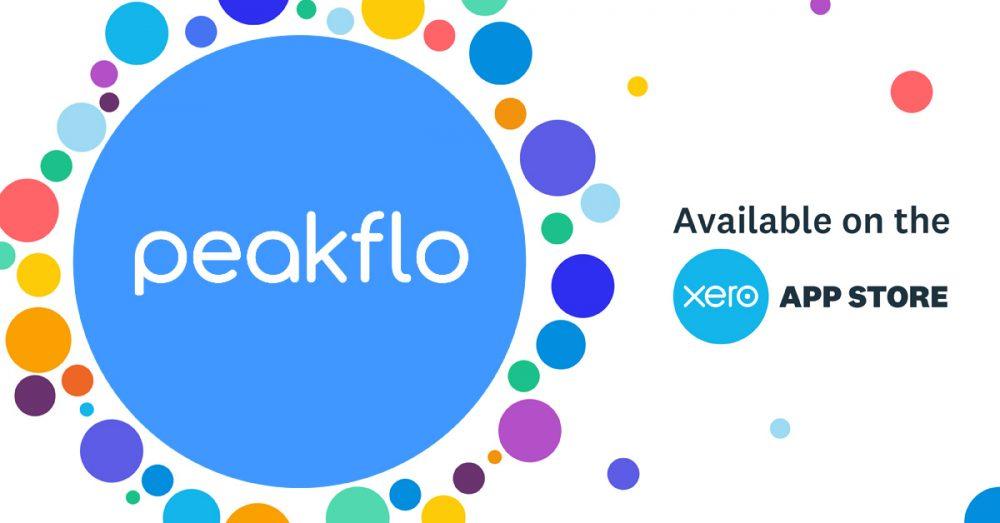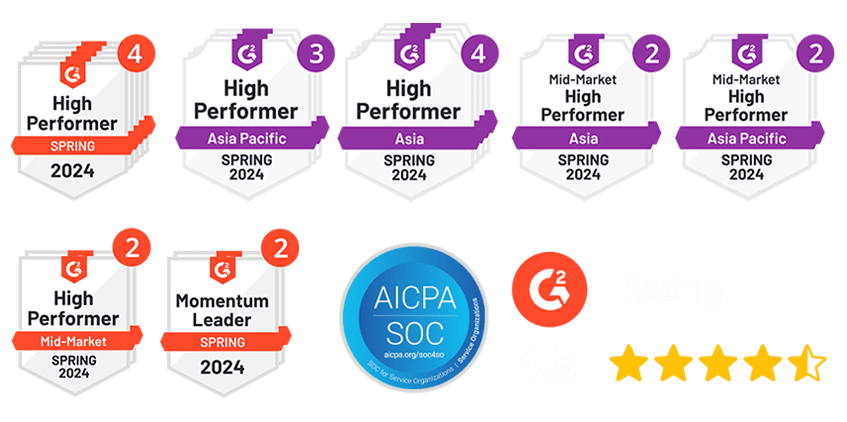Paying a large bill all at once can be tough. Businesses need cash for daily expenses, payroll, and unexpected costs. They risk running low on funds if they spend too much at once. This is where partial payment helps.
Instead of paying everything upfront, businesses can split payments into smaller parts. This makes it easier to manage cash while keeping operations smooth. Vendors also benefit by receiving steady payments instead of waiting for full amounts.
But how does partial payment work? What types exist, and when should businesses use them? Let us go over the key details.
Understanding Partial Payment
A partial payment happens when someone pays less than the full amount owed. Instead of settling a bill in one go, they make smaller payments over time. This method works in both accounts payable and accounts receivable, depending on whether a business is making or receiving payments. Let us take a look.
How It Works in Payables (When You Owe Money)
Imagine Sarah owns a bakery. She orders $5,000 of ingredients from a vendor but does not have the full amount immediately. Instead of delaying the purchase, she arranges a partial payment plan. She pays $2,000 upfront and agrees to pay the rest in two more installments.
This helps Sarah keep enough cash for other business expenses like rent and salaries. The vendor also benefits because they now secure part of the payment instead of waiting for the full amount.
How It Works in Receivables (When You Receive Money)
Now, let us look at it from a vendor’s side. James runs a printing business and completes a $3,000 order for a customer. The customer can not pay the full amount immediately but offers to make partial payments. James agrees to receive $1,500 now and the rest over the next month.
This way, James keeps his cash flow steady while making it easier for his customers to afford the purchase. He also avoids the risk of delayed or missed payments because he is getting some money upfront.
Types of Partial Payments
Not all partial payments work the same way. The payment structure depends on the agreement between the buyer and the vendor. Some payments follow a fixed plan, while others allow more flexibility. Here are the most common types and how they work.
1. Scheduled Partial Payments
These payments follow a fixed plan. Customers pay a set amount on scheduled dates. This method is common for loan repayments, tuition fees, and service contracts.
Example: Mia has a student loan of $15,000. Instead of paying it all at once, she agrees to a partial payment plan of $300 per month for five years.
2. Unscheduled Partial Payments
These payments are made whenever the buyer has extra funds. There is no fixed schedule, but the full amount must be paid within a set period.
Example: Jake runs a seasonal business. He owes $8,000 to a vendor but pays in partial payments whenever his business makes extra profit.
3. Revolving Credit Partial Payments
Credit card accounts and lines of credit allow minimum payments instead of requiring the full balance upfront. This keeps the account in good standing while avoiding default.
Example: Olivia’s business credit card has a balance of $5,000. The bank requires a partial payment of $250 to avoid late fees and interest penalties.
4. Installment Payments for Large Purchases
This type is used for high-value items like vehicles, machinery, or real estate. Customers pay in multiple fixed amounts until the full cost is covered.
Example: David buys a truck for his business. The total price is $50,000, but the dealer offers an installment-based partial payment plan of $800 per month for five years.
5. Percentage-Based Partial Payments (Linked to Income or Revenue)
Instead of a fixed amount, some businesses allow payments based on income or revenue. This is common in royalty agreements, commission-based services, and flexible business financing.
Example: A startup takes a revenue-based loan of $100,000. Instead of fixed payments, they agree to pay 5% of their monthly revenue until the loan is fully repaid.
Common Scenarios for Partial Payments
Businesses and individuals use partial payments in many situations. This approach helps manage costs, maintain cash flow, and make large purchases easier. It benefits both buyers and vendors by reducing financial strain. Here are the most common scenarios where partial payments are used.
1. Real Estate Purchases
Most people do not pay the full price of a home or business property at once. Instead, they make a partial payment called a down payment. The rest is paid later, usually at closing. Many buyers also take out loans and repay them in monthly installments. This makes buying property more affordable.
2. Vehicle and Appliance Purchases
Cars, trucks, and expensive appliances often come with partial payment options. Buyers can pay in installments instead of one large sum. Some take out loans, while others use dealer financing. This allows them to afford essential items without using all their cash at once.
3. Service Agreements and Contracts
Businesses often hire consultants, contractors, or agencies for services. Instead of paying the full amount upfront, they pay a deposit before work begins. The rest is paid later at different stages or when the job is finished. This helps both the business and the vendor manage their cash flow.
4. Supplier and Vendor Payments
Many businesses work with vendors and suppliers on credit. Instead of paying the full invoice immediately, they pay part of it upfront and the rest later. This allows businesses to keep operations running smoothly while ensuring vendors receive timely payments.
5. Loan and Debt Repayments
Most loans, including mortgages, car loans, and business financing, are paid in partial payments. Borrowers repay the amount over time in smaller monthly amounts. This makes it easier to handle large debts without financial stress.
6. Subscription and Installment-Based Services
Many services offer partial payment options. Streaming platforms, software providers, and membership programs allow users to pay monthly instead of all at once. Buy Now, Pay Later (BNPL) services let customers split purchases into smaller payments. This makes products and services more accessible.
7. Utility Bills and Recurring Expenses
Some utility providers, landlords, and service companies accept partial payments. This helps customers who cannot pay the full amount right away. Instead of losing access to essential services, they pay part now and the rest later.
Benefits of Partial Payments
A partial payment is more than just a way to pay in smaller amounts. It helps businesses manage cash, reduce risks, and build trust with vendors and customers. Companies can keep their operations running while making payments more manageable. Here is why partial payments are useful.
1. Keeps Cash Available for Other Expenses
Businesses need cash for rent, payroll, and daily costs. A partial payment allows them to pay in smaller amounts while keeping enough money for other needs. This prevents cash shortages and ensures smooth operations.
2. Reduces Financial Stress
Paying a large bill at once can put pressure on a business. Partial payments spread out costs, making it easier to plan and budget. Businesses can avoid sudden financial strain and handle expenses more smoothly.
3. Ensures Vendors Get Paid on Time
Waiting for full payments can be risky for vendors. A partial payment gives them a portion upfront, reducing delays. This helps businesses maintain good relationships with their vendors while running supplies and services.
4. Lowers the Risk of Missed Payments
Customers who cannot afford a large payment might delay or miss paying entirely. They can pay in smaller amounts over time with a partial payment option. This makes it easier for businesses to collect payments without losing customers.
5. Builds Long-Term Business Relationships
Companies that offer flexible payment options earn customer trust. When vendors allow partial payments, buyers are more likely to return. This leads to long-term business deals, better pricing, and stronger partnerships.
6. Boosts Sales and Attracts More Customers
Many people hesitate to buy expensive products if they must pay the full price at once. Offering partial payment plans makes purchases easier. Businesses can increase sales by making products and services more affordable.
7. Helps Businesses Stay Stable
Unexpected expenses can disrupt business operations. A partial payment plan helps companies manage costs while keeping their business running. This is useful for supplier payments, loan repayments, and big investments.
Potential Drawbacks of Partial Payments
A partial payment can make transactions more manageable, but it also comes with challenges. Businesses and vendors must consider the risks before offering or accepting this payment method. Here are some potential drawbacks of using partial payments.
1. Longer Payment Periods Can Affect Cash Flow
When businesses allow partial payments, they receive money over time instead of in full. This can create cash shortages, especially if they need funds for urgent expenses. Vendors must plan carefully to avoid delays in covering their costs.
2. Risk of Unpaid Balances
Customers who agree to partial payments may fail to pay the remaining balance. Some may delay payments, while others may default entirely. This can create financial losses for vendors, especially if they rely on full payments to maintain operations.
3. Increased Administrative Work
Handling partial payments requires more tracking and follow-ups. Businesses must keep records of multiple transactions, send reminders, and manage unpaid balances. This adds extra work for accounting teams and increases the risk of errors.
4. Possible Late Payments and Penalties
Some customers may struggle to keep up with partial payment schedules. Late payments can disrupt vendor cash flow and cause businesses to enforce penalties. If late fees are too high, they may discourage customers from completing their payments.
5. Higher Costs for Businesses
Vendors that allow partial payments may face extra costs. Processing multiple transactions can lead to higher bank fees, accounting expenses, and collection costs. The costs can be even greater if businesses need legal action to recover unpaid balances.
6. Delayed Revenue Can Slow Business Growth
Receiving payments in small amounts instead of full transactions can limit investment opportunities. Businesses may struggle to fund new projects, buy inventory, or expand operations if too much revenue is tied up in partial payments.
7. Potential Strain on Business Relationships
If a customer falls behind on partial payments, it can create tension between businesses and vendors. Companies may need to send payment reminders, enforce stricter terms, or refuse future deals, which can harm long-term partnerships.
Practical Considerations for Implementing Partial Payments
A partial payment system can help businesses close deals and improve cash flow. However, without a plan, it can also lead to payment delays and financial risks. To make it work, businesses need clear rules, proper tracking, and a way to check customer reliability. Here are three things to consider before offering partial payments.
1. Set Clear Payment Terms
Businesses must decide how and when payments will be made. A clear agreement helps avoid confusion and missed payments. Important details to include:
- Payment schedule – Will payments be made weekly, monthly, or at set milestones?
- Upfront amount – What percentage must be paid before the product or service is delivered?
- Late fees – Will there be penalties if payments are delayed?
Example: A web development company signs a partial payment contract for a $10,000 project. The client pays 50% upfront, 30% after the first draft, and 20% at the final launch. The contract states that late payments will result in a $50 penalty per week.
2. Track Payments With a Reliable System
Managing partial payments means keeping track of due dates, outstanding balances, and received amounts. If payments are tracked manually, mistakes can happen. Businesses should use accounting software, invoicing tools, or automatic reminders to stay organized.
Example: A photography studio offers a three-month installment plan for wedding packages. They use automated invoicing software that sends reminders before each due date. This helps them receive payments on time without constant follow-ups.
3. Check Customer Payment History
Not every customer can handle a partial payment plan. Some may delay payments or fail to pay at all. Before offering this option, businesses should review customer payment history, check their credit, or ask for an initial deposit to reduce risks.
Example: A furniture supplier agrees to a partial payment deal with a new customer. They run a credit check to ensure reliability and require a 30% deposit before shipping the products.
Best Practices for Managing Partial Payments Effectively
A partial payment system can help businesses grow and maintain steady cash flow. But without a clear plan, it can cause delays, financial losses, and extra work. To avoid these problems, businesses must follow the right steps. Here are the best ways to manage partial payments successfully.
1. Use a Written Agreement for Every Payment Plan
A handshake or verbal promise is not enough. Businesses should create a written contract for every partial payment arrangement. This protects both the vendor and the customer. A good agreement should include:
- Payment schedule – Dates and amounts for each payment.
- Late fees – Extra charges for missed payments.
- Final deadline – A clear date for full payment completion.
- Dispute resolution – Steps to take if a customer refuses to pay.
Having these details in writing prevents misunderstandings and ensures both sides follow the agreed terms.
2. Automate Invoices and Payment Reminders
Tracking partial payments manually can lead to mistakes. Businesses should use automated billing systems to:
- Send reminders before each due date.
- Track which payments have been made and what is still due.
- Allow customers to pay online through multiple options.
Payment automation software makes payment tracking easier. They reduce errors and help businesses collect payments on time without constant follow-ups.
3. Require a Deposit for Large Purchases
Some customers may agree to a partial payment but struggle to complete the full amount. To reduce risk, businesses should ask for a deposit before starting work or delivering products.
- A deposit shows the customer is serious about the purchase.
- It protects the vendor from losing money if the customer does not pay later.
- It ensures the business has some cash flow while waiting for future payments.
For high-value transactions, businesses can also check the customer’s credit history before offering a payment plan.
4. Offer Different Payment Methods
Some customers miss payments because the process is inconvenient. Businesses should provide multiple payment options to make it easier for customers to stay on track. These can include:
- Automatic withdrawals from bank accounts or credit cards.
- Flexible installment schedules that fit the customer’s budget.
- Payment through online gateways like PayPal, Stripe, or bank transfers.
The easier it is for customers to make a payment, the less likely they are to fall behind.
5. Monitor Unpaid Balances and Act Quickly on Late Payments
Tracking partial payments is not just about sending invoices. Businesses must actively monitor unpaid balances and take action when payments are late. The best approach is to:
- Send a polite reminder as soon as a payment is overdue.
- Give a short grace period before applying late fees.
- Offer a payment adjustment plan if a customer is struggling.
If a customer continues to delay payments, businesses should:
- Stop providing services or products until the payment is made.
- Limit future credit options for the customer.
- Consider working with a collections agency if necessary.
Taking quick action prevents long-term financial losses and keeps cash flow stable.
Why Peakflo is the Best Solution for Managing Partial Payments?
Tracking partial payments manually can be stressful. Missed payments, errors, and delays can cause cash flow problems. Peakflo solves this with automation, clear tracking, and flexible payment options. Whether your business needs to pay vendors in parts or collect partial payments from customers, Peakflo makes the process easy and reliable. Here is how Peakflo works.
1. Make Partial Payments to Vendors with Ease
Managing Accounts Payable (AP) is simpler with Peakflo. Businesses can pay vendors in smaller amounts instead of settling full invoices simultaneously.
- Choose how much to pay now and how much later.
- Keep track of unpaid balances to avoid missed payments.
- Control cash flow by spreading out expenses over time.
Why it matters: Businesses can pay vendors based on budget and agreements while ensuring payments are made on time.
2. Get Paid Faster with Partial Payment Collection
For businesses handling Accounts Receivable (AR), Peakflo makes it easy to receive partial payments from customers. The system ensures that payments are collected on time and without hassle.
- Give customers flexible payment choices.
- Let them pay in full or in parts through a simple online portal.
- Track invoices automatically to see what is paid and what is pending.
Why it matters: Businesses that offer payment flexibility reduce late payments, increase customer satisfaction, and improve cash flow.
3. AI-Powered Automation for Faster Processing
Peakflo uses AI technology to reduce manual work and improve partial payment accuracy.
- Capture invoices and receipts automatically.
- Apply payments to outstanding invoices instantly.
- Process transactions through Email, WhatsApp, and API.
Why it matters: Businesses save time, reduce errors, and speed up approvals, leading to smoother financial operations.
Conclusion
Partial payments help businesses stay on top of cash flow, but without the right tools, they can quickly become a mess of missed deadlines and endless follow-ups. Keeping track of who paid what and when should not feel like a guessing game.
That is where Peakflo makes a difference. It lets you offer flexible payment options, automate invoice tracking, and ensure smooth collections—without the headaches. Whether handling Accounts Payable or Accounts Receivable, Peakflo keeps everything running smoothly.
Why struggle with payments? Book a demo today and stay in control of your finances!









![Why AI Sales Calls Are Making Good Sales Reps Even Better [2025 Guide] ai sales calls](https://cdn-kmjmp.nitrocdn.com/YvtqmrsiHUxqerlSiZgbfzqqTARWTElr/assets/images/optimized/rev-834053b/blog.peakflo.co/wp-content/uploads/2025/09/65168cf6-3001-4733-8cbc-12d5684cf449-218x150.webp)







